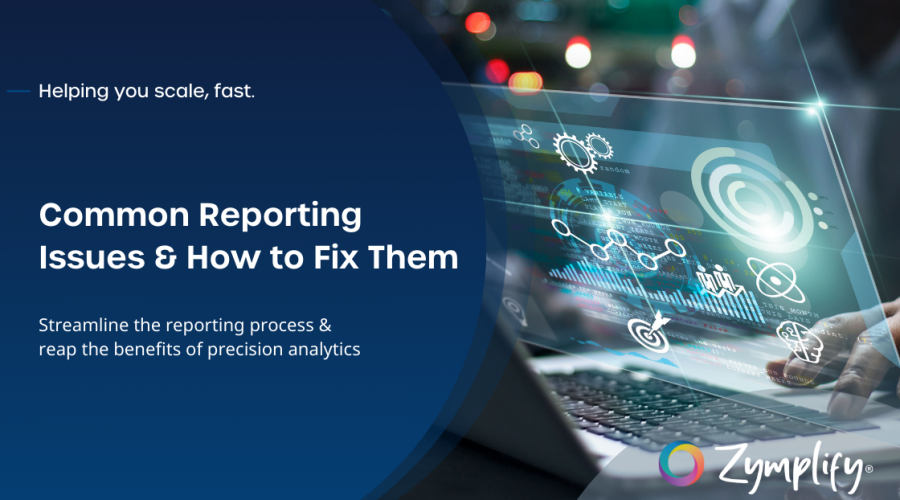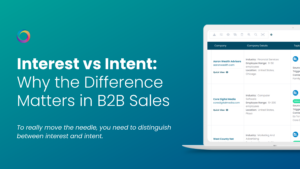With great data comes great challenges, or at least we think that is how the phrase should go.
Every action your business takes online and the actions of your customers generate data at exceptional rates. While we all know the benefits of reporting, it is not always a straightforward process and can leave your team frustrated and unmotivated.
Fortunately, we have found a simple solution for some of the common reporting issues.
Here are the 3 most common reporting issues and some tips on how to fix them.
Data Silos
Before you can even report on your data, you need to make sure that it is in a good enough condition to be used.
In many organisations, different departments will handle their insights differently. They will have their own methods of data collecting and organising which results in data silos.
At first glance, it might not seem like a problem, but if left unchecked, these pockets of isolated data can grow into serious issues for your organisation.
Additional Storage Costs
Your business is constantly generating financial, operational and consumer data. This often happens automatically, without anyone really noticing but over time, these growing datasets will require additional storage, which will lead to additional costs.
Inaccessible and Unusable Insights
When isolated – siloed data is only accessible to the single department that was responsible for its collection, other departments might miss out on valuable insights. Despite the importance of data, only 14% of companies are actively making it accessible to employees. This is problematic as these datasets often contain valuable information such as sales, HR, or supply chain data. Leftronic found that of all the data collected, 88% goes unanalysed and essentially to waste due to lack of data processing capacity and reporting capabilities.
Additional Time
Expanding data silos require businesses to invest time into negotiating access to valuable information and cleansing dirty data, another common reporting challenge we will touch on further down. The first step to breaking down data silos is identifying where the problem is. You need to look at each of your departments, examine their data collecting practices and look at the quality of the data. If the data is up to standard, you can introduce a new system of cataloguing insights, make sure it is stored in a central location and made accessible to each member of your organisation.
Dirty and Decaying Data
Many campaigns fail because the data it was built on simply wasn’t good enough.
Just as fast as data is generated, it is degrading at similar rates. Chances are if you’re currently creating monthly reports you are most likely working with data that is already a month old, at least.
Data degradation is one of the main causes of unsuccessful marketing and sales campaigns. Leading US credit companies report that around 14% of revenue loss happens due to poor quality data. Reports suggest B2B data is decaying at a rate of 70.3% annually, and 3% of data becomes out of date every month. Much of the data held within organisations is not reviewed frequently enough to stay fresh, which means it becomes stagnant and useless.
Building campaigns on stale data and relying on inaccurate information will unwittingly lead to the wrong business strategies and could cost your organisation dearly.
A study by DiscoverOrg found that sales and marketing departments lose approximately 550 hours and as much as $32,000 per sales rep from using bad data – this means that both time and money are wasted on ineffective processes.
For effective reporting, you need to invest in a solution that gives you up to accurate and up to date data. Access to the freshest data means that you can evaluate the success of your activities as they happen and allow you to pivot your strategy as needed.
Data Overload
Although it is hugely beneficial to have data on all your activities, when it comes to reporting on your insights it can be overwhelming and time-consuming to prioritise the metrics you need. The type of data you need to analyse will depend on your campaigns and your strategies.
You must take the channel you are using and who you are reporting to into consideration when considering your metrics. Each of your stakeholders will want to see different insights. Executives will be interested in the overall performance across every channel, while your managers will want to analyse and monitor the day to day performance of your activities.
To avoid getting lost in your own data, you need to learn how to segment and filter your metrics. Remember to keep sight of your reporting goals at all times and try not to be tempted to only report on vanity metrics, but consider the bigger picture.
So how can you do all that? The answer is Precision Analysis and Reporting
Zymplify makes precision analysis and reporting simple. As the only all-in-one precision marketing and sales platform on the market, it gives you the tools to gather real-time data at every step of your prospecting, marketing and sales processes while giving you access to accurate and reliable data to help you identify what’s working and what isn’t.
The central data storage puts an end to data silos and gives access to every member of your organisation in one place. More than that, you no longer need to rely on external platforms like Google Sheets, Excel or Power BI, as everything you could need for accurate reporting is housed in a centralised database.
With Zymplify you can focus on the metrics that really matter for your business and turn raw data into actionable insights in minutes using built-in customisable reporting tools and analyse the performance of your campaigns, your prospecting, advertising and much more.
Book your no-obligation demo with a Zymplify team member to talk through what the Zymplify Platform can do for you. Or try the platform for free and witness the power of precision sales and marketing for yourself.




